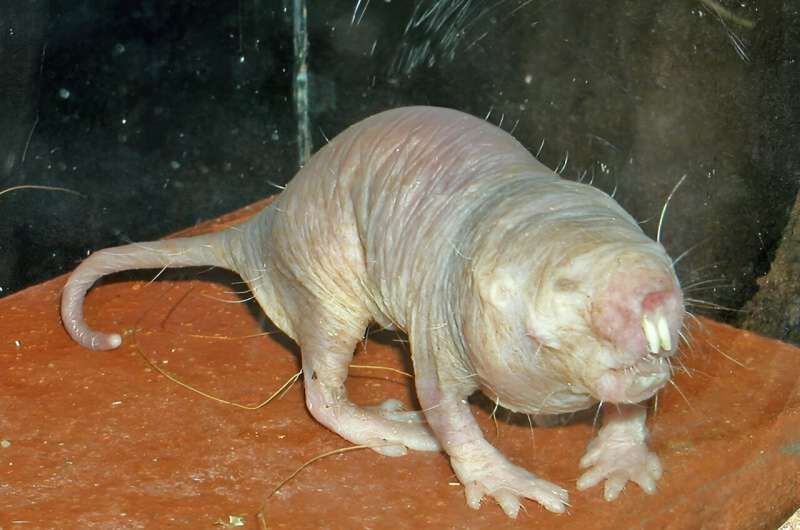This article has been reviewed according to Science X's editorial process and policies. Editors have highlighted the following attributes while ensuring the content's credibility:
fact-checked
peer-reviewed publication
trusted source
proofread
Secrets of the naked mole-rat: New study reveals how their unique metabolism protects them from heart attacks

This unusual, subterranean mammal with extreme longevity shows genetic adaptations to low oxygen environments which could offer opportunities for advancing other areas of physiological and medical research in humans, including the development of novel therapeutic approaches.
New research from Queen Mary University of London led by Dr. Dunja Aksentijevic in the Faculty of Medicine and Dentistry has revealed that the genome of the naked mole-rat contains specific adaptations that allow them to survive in low-oxygen and even no oxygen environments in their natural habitat. The findings published in Nature Communications also show the mammals' distinct cardiometabolic profile helps to avoid damage to their hearts caused by cardiovascular events.
Dr. Aksentijevic led the team of scientists from London, Pretoria and Cambridge to sample heart tissue from the naked mole-rat and compared it to samples from other African mole-rat species (Cape, Cape dune, common, Natal, Mahali, highveld and Damaraland mole-rats), as well as evolutionarily divergent mammals (Hottentot golden mole and C57/BL6 mouse).
In this study, they found that the naked mole-rat has a unique expression of genes in heart cells controlling energy generation from sugars resulting in a metabolic profile that is distinct from any of the other mole-rats as well as the other species studied. These unique cardiac metabolic and genetic features of the naked mole-rat heart led to enhanced energy reserves even during blood occlusion and return of blood flow after in vitro simulated heart attack.
Collectively, these adaptations result in the naked mole-rat's tolerance to reduced oxygen and negligible damage to their heart tissue.
Dr. Chris Faulkes, Reader (Associate Professor) in Evolutionary Ecology at Queen Mary and Lead Author, said, "Naked mole-rats live in a unique hypoxic and social environment, and we believe these factors have driven the evolution of special adaptations in their hearts that contribute to their exceptional longevity and health span."
Dr. Aksentijevic said, "Unlike humans, who are prone to heart injury by hypoxia and anoxia caused by blood occlusion during heart attacks, NMR hearts have adapted to evade such damage. Thanks to our research, we are now able to understand the metabolic and genetic mechanisms underpinning this unique level of protection."
More information: Naked mole-rats have distinctive cardiometabolic and genetic adaptations to their underground low-oxygen lifestyles, Nature Communications (2024). DOI: 10.1038/s41467-024-46470-x
Journal information: Nature Communications
Provided by Queen Mary, University of London




















